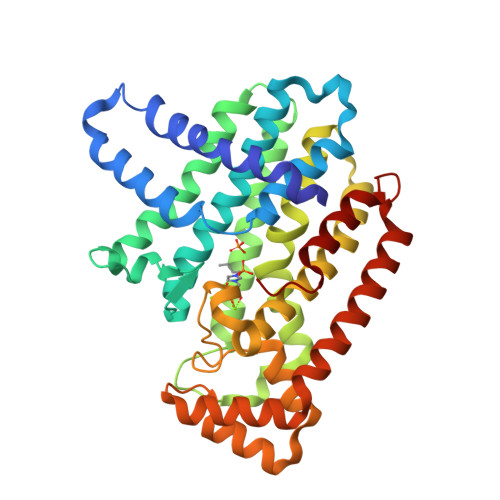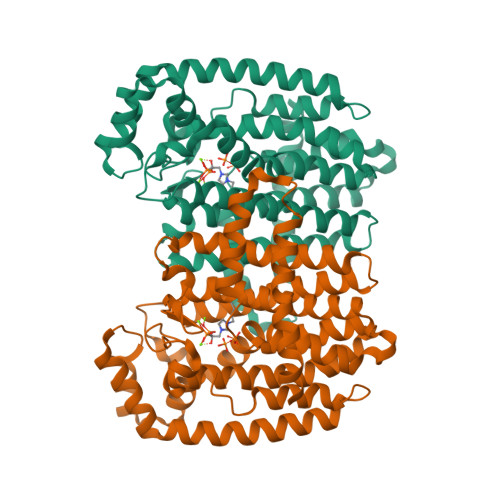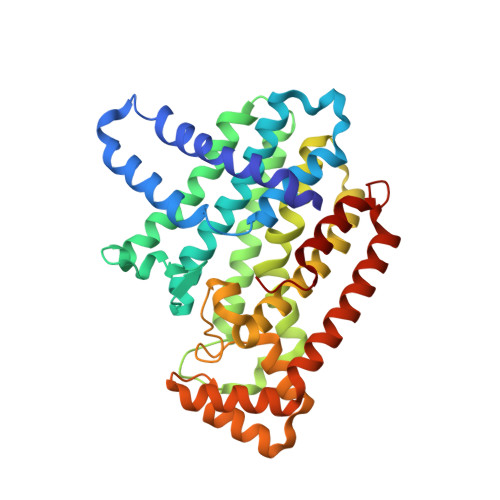Chemo-Immunotherapeutic Anti-Malarials Targeting Isoprenoid Biosynthesis.
Zhang, Y., Zhu, W., Liu, Y.L., Wang, H., Wang, K., Li, K., No, J.H., Ayong, L., Gulati, A., Pang, R., Freitas-Junior, L., Morita, C.T., Old-Field, E.(2013) ACS Med Chem Lett 4: 423-427
- PubMed: 23610597
- DOI: https://doi.org/10.1021/ml4000436
- Primary Citation of Related Structures:
4GA3 - PubMed Abstract:
We synthesized 30 lipophilic bisphosphonates and tested them in malaria parasite killing (targeting parasite geranylgeranyl diphosphate synthase, GGPPS) as well in human γδ T cell activation (targeting human farnesyl diphosphate synthase, FPPS). Similar patterns of activity were seen in inhibiting human FPPS and Plasmodium GGPPS, with short to medium chain-length species having most activity. In cells, shorter chain-length species had low activity, due to poor membrane permeability, and longer chain length species were poor enzyme inhibitors. Optimal activity was thus seen with ~C 10 side-chains, which have the best combination of enzyme inhibition and cell penetration. We also solved the crystal structure of one potent inhibitor, bound to FPPS. The results are of interest since they suggest the possibility of a combined chemo/immuno-therapeutic approach to anti-malarial development in which both direct parasite killing as well as γδ T cell activation can be achieved with a single compound.
Organizational Affiliation:
PrenylX Research Institute, Zhangjiagang, 215600, People's Republic of China ; Department of Chemistry, University of Illinois at Urbana-Champaign, Urbana, IL 61801, USA.



















